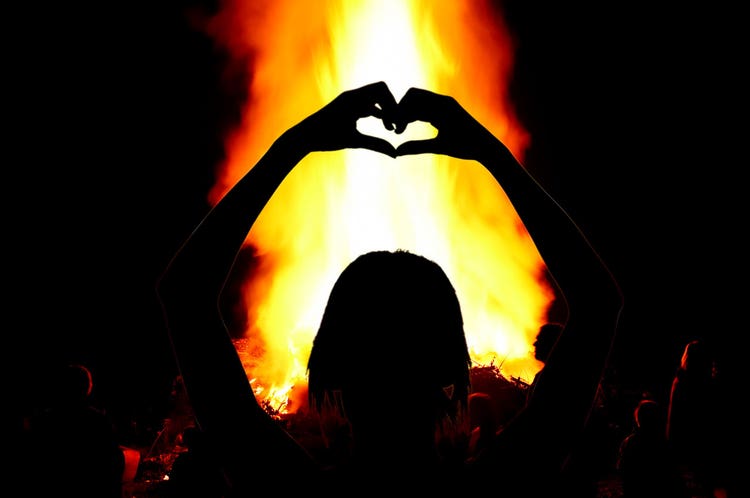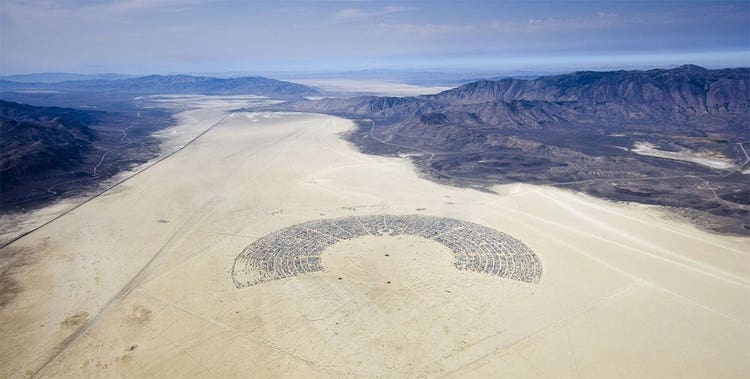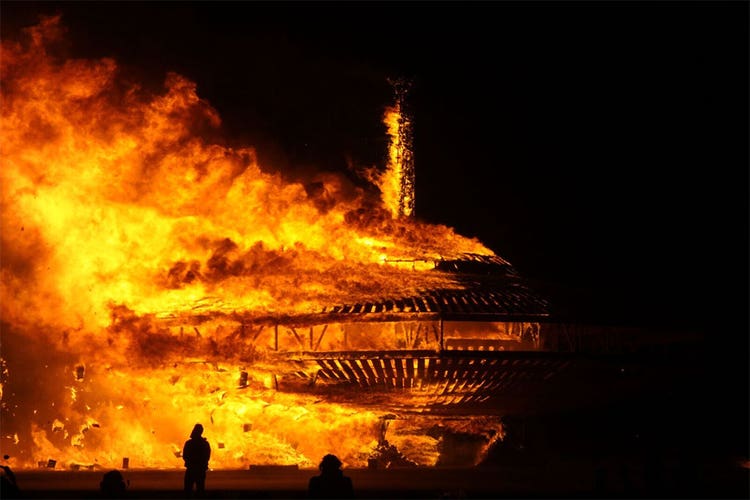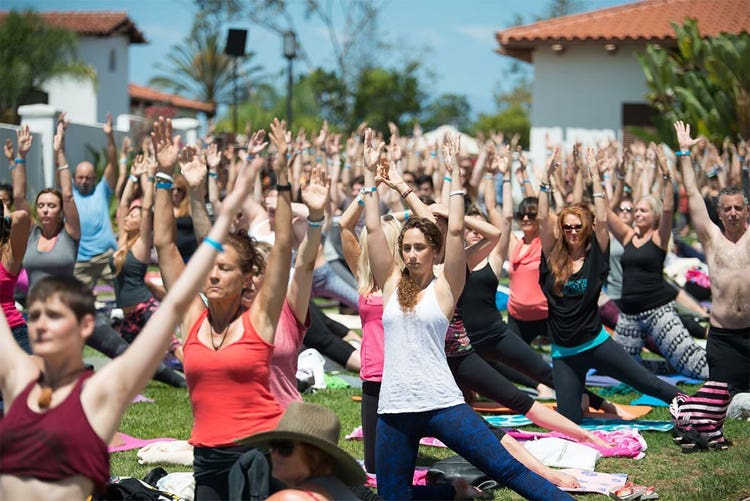From Party to Purpose

Now big festivals aren’t just countercultural. They’re all about the cause.
While festivals in a broader sense are nothing new (people have been gathering to celebrate various aspects of their culture, religion and/or tradition since the beginning of time), the last two decades have given rise to the era of music and art festivals. And they’ve come a long way from the free-loving, acid-dropping, hippie days of Woodstock — and a focus on “just” music.
What began as a handful of multi-stage, multi-day music festivals in the late ’90s and early 2000s has exploded into hundreds of events across the U.S. and around the world. As they’ve grown in scope and size, so has their audience and mass appeal. Today, approximately 32 million people attend at least one music festival a year in the U.S., according to Nielsen’s Audience Insights Report on Music Festivals. Nearly half (46 percent) of attendees are between the ages of 18 and 34. These events practically have become a rite of passage for Millennials, who are willing to spend an average of $207 a ticket, and are a huge draw for corporate sponsors and marketers.
However, festivals once were more of a countercultural affair, smaller gatherings where free-spirited people could escape the mainstream and celebrate their shared passion for music, art, self-expression and connection. And, although festivals have grown in size and attendance, many are still giant outdoor playgrounds where adults can depart from the conventional, embrace who they truly are, creatively explore, learn new things — and dance like crazy without judgment from onlookers.
Burning Man sparks a movement
One of the first “modern” counterculture events, Burning Man, an annual gathering in the desert of Nevada, has branched out into dozens of transformational festivals and conscious gatherings throughout North America and the world. Conceived by Larry Harvey and Jerry James, who burned a 9-foot rudimentary wooden figure on a San Francisco beach in 1986, Burning Man was quickly adopted by the S.F. Cacophony Society — a self-described “randomly gathered network of individuals united in the pursuit of experiences beyond the pale of mainstream society” — bringing with them an underground ethos and surrealist, counterculture flair. In 1990, the celebration attracted the attention of local authorities, who put a stop to burning “The Man” on the public beach, and the Black Rock Desert in northern Nevada was proposed as an alternate site.
Created literally out of nothing on a dry lake bed in the vast Nevada desert, the founders created a temporary “autonomous zone” apart from the ordinary world, and Black Rock City was born. The week-long Burning Man gathering in the Nevada desert doubled in attendance every year in the early ’90s, and by 1997, Black Rock City grew to a population of 10,000 people gathered for the annual event. Meanwhile, a distinct Burning Man culture emerged, rooted in what are now called the Ten Principles: radical inclusion, gifting, de-commodification, radical self-reliance, radical self-expression, communal effort, civic responsibility, leaving no trace, participation and immediacy.
Truly unlike any other festival, the event is described today as an experiment in community and art that’s completely generated by (and reliant upon) its participants, called Burners. There are no paid acts or performances: the temporary city, the art, the performances, the interactions — essentially the experience of Burning Man (where still, anything goes) — are created by participants, who generously contribute their unique talents and creative expression for the enjoyment of the entire community.

Primarily featuring outsider art and visionary art, the festival includes massive, interactive installations constructed by participants on the vast playa. DJs set up full-blown EDM (electronic dance music) camps with professional sound stages and speakers. There are fire dancers, drummers, musicians, poets, contortionists and performers of every variety showcasing their talents, and everyone dresses up to their heart’s desire. Large, themed camps and villages are organized to offer communal spaces and opportunities for interaction, including meditation domes, oasis bars, roller skating rinks, dance parties, tea houses, carnivals and so much more.
Transformational festivals keep the flame
In 2011 Burning Man sold out for the first time with 53,963 participants, and continued to do so for the next five years. The festival was forced to cap the population at 70,000 participants, in accordance with limitations stipulated in their Bureau of Land Management permit, for the last four years.
As the annual gathering grew, smaller regional events inspired by the principles of Burning Man began to spring up. Small groups of Burners all over the world began holding transformational festivals that promote community-building ethics and adopt a shared value system, or ethos, such as personal self-discovery, healthy living, social responsibility, individual expression, human connection and environmental sustainability. These events are designed as full-blown celebrations of life, focused on personal growth and transformation, as well as the transformation of society to create a more peaceful and sustainable existence.
At first glance, transformation festivals resemble their mainstream music counterparts, but they present attendants with endless opportunities to learn and grow, including inspirational lectures, workshops, ceremonies, interactive art installations, yoga classes, group meditation, drum circles, live performances and more. And, like Burning Man, active participation is strongly encouraged.

Typically held outdoors in a somewhat remote location, transformational festivals are generally three to five days long, involve camping and espouse a “leave no trace behind” policy. Lightning in a Bottle (LIB), one of the first festivals to combine electronic beats with personal growth workshops and yoga classes, is the second largest transformational festival next to Burning Man. LIB sold 20,000 tickets to its 2016 event. Conceived in 2004 and held annually over Memorial Day weekend in Bradley, California, the four-day event produced by the Do LaB, whose slogan is “Create – Experience – Inspire,” features multiple stages with music and other types of performance, immersive environments, interactive art and hundreds of classes, performances and workshops.
Other transformational festivals include Lucidity in Santa Barbara and Symbiosis Gathering in Northern California; Beloved Festival in Oregon, Arise Music Festival in Colorado, and Shambala Gathering in British Columbia. There’s the growing Envision Fest in Costa Rica, longstanding Boom Festival in Portugal, and well-attended Fusion Festival in Germany.
Yoga stretches the concept farther
Along with the growth of the transformational festival movement, music and yoga festivals with less of a psychedelic influence have also become a thing. In 2007, New Jersey–based teacher David Bryson organized the first Evolve Music and Yoga Festival, after returning home inspired by an early-morning yoga class he attended at Bonnaroo in Tennessee. He booked 30 bands from the Northeast jam band circuit, only scheduling a few yoga classes, and was surprised when nearly a thousand people showed up who were just as interested in doing yoga as jamming out. By the festival’s third year, yoga had become equally as important as the music, with 70 bands booked and 16 yoga teachers, as well as a clear focus on self-improvement and healthy living.
In 2009, the first Wanderlust Festival, combining live music, yoga, hiking, inspirational speakers and local and sustainable food, was held in Squaw Valley, California. Founded by Jeff Krasno, Sean Hoess and Schuyler Grant, the unique event brings people who share the same values of healthy and mindful living together to practice, learn, explore, taste and dance as a community. It’s a place where yogis can let their hair down a little and enjoy each other’s company. There are now eight Wanderlust Festivals a year held throughout the U.S. and Canada, as well as one in Australia.

After the first Wanderlust, yoga festivals of every size and scale began popping up across the nation. Summertime festivals quickly became a place where yogis could take workshops, listen to lectures, make new friends, play outdoors and have fun. In the summer of 2016, more than 30 yoga festivals took place in the U.S., including the Telluride Yoga Festival, Iowa Yoga Fest and Sedona Yoga Festival, with many more happening abroad, including the Bali Spirit Festival, Evolve Yoga Fest in Australia, and Spirit Fest in Cape Town, South Africa.
2009 was also the first year of Bhakti Fest, a six-day, drug- and alcohol-free yoga, sacred music and personal growth festival in Joshua Tree, California. Bhakti Fest is held every September. Founder Sridhar Silberfein, who arranged for Swami Satchidananda to give the opening address at Woodstock in 1969, created Bhakti Fest as a spiritual mecca, featuring nonstop sacred music performances, 12 hours of daily yoga classes, consciousness-raising workshops and full-blown ecstatic dance parties. Now, thousands gather to share their wisdom and practice devotion together at Bhakti Fest West, Bhakti Fest Midwest and Shakti Fest.
As festivals have evolved, one thing remains clear: people like to gather with those who share their passions, whether that’s music, art, yoga, personal growth or kirtan. From the wildly hedonistic to the devotedly spiritual, there’s a festival for everyone.